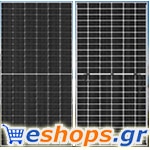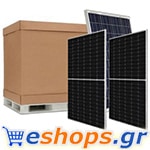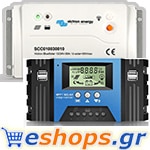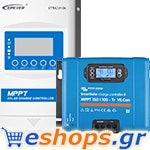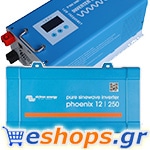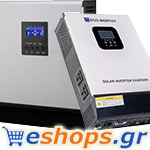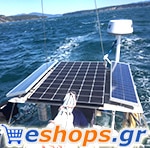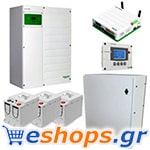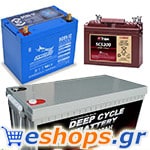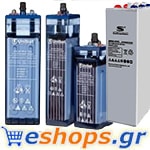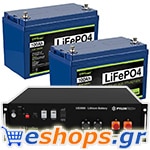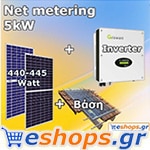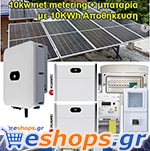Autonomous photovoltaic systems solar Informations
The autonomous photovoltaic solar systems are designed to operate independently of the mains, and are generally designed and configured to supply certain DC and / or AC electrical loads. These types of systems can only be powered by a photovoltaic array or they can use the wind, an engine generator or an auxiliary power source as an auxiliary power source in what is called a photovoltaic-hybrid system. The simplest type of autonomous photovoltaic system is a direct connection system, where the DC output of a photovoltaic unit or array is connected directly to a DC load (Fig. 5.5). Since there is no storage of electricity (batteries) in direct connection systems, the charge only operates during hours of sunlight, making these designs suitable for common applications such as fans, water pumps and low circulation pumps for solar thermal heating systems. water. Compensating the impedance of the electric charge with the maximum output power of the photovoltaic array is a critical part of designing a well-performing direct-link system. For certain loads, such as positive displacement water pumps. A type of DC-DC electronic converter, called the Maximum Power Point Tracker (MPPT), is used between the array and the load to help make better use of the available maximum output power of the array.
Autonomous solar photovoltaic systems Simpler type of autonomous photovoltaic system
In many autonomous photovoltaic systems, batteries are used for energy storage. Figure 5.6 shows a diagram of a typical stand-alone PV system that supplies DC and AC loads. Figure 5.7 shows how a typical hybrid photovoltaic system can be configured.
Autonomous photovoltaic solar systems INFORMATION
Diagram of an autonomous photovoltaic system with battery storage that supplies DC and AC loads
Photovoltaic hybrid system diagram
Conversion of solar energy
Lana Chaar Ph.D. , in Power Electronics Manual (Second Edition), 2007
26.5.2 Independent photovoltaic systems
Autonomous photovoltaic systems are usually a substitute for power. They generally include solar chargers, storage batteries, and controls as shown in Fig. 26.18. Ground or ceiling systems will require a support structure and if 120/240 volt ac is desired, a dc to ac converter is also required. They are especially used in remote places that are not connected to the mains. In many autonomous photovoltaic systems, batteries are used for energy storage. A charge controller is then used to control the entire system and prevent the battery from overcharging and overcharging. Photovoltaic modules charge the battery during the day and supply the charge as needed.
Autonomous photovoltaic solar systems INFORMATION
Diagram of an autonomous photovoltaic system with dc battery storage power and AC loads [6].
Batteries Autonomous solar photovoltaic systems
Batteries are often used in photovoltaic systems to store energy generated by the photovoltaic cell during the day and to supply it with electrical charges as required (overnight or cloudy). In addition, batteries are also needed in the monitoring systems to maintain MPP operation in order to provide constant voltage electrical loads. Almost all of the batteries used in photovoltaic systems are deep acid lead cycle [27]. These batteries have thicker lead plates that allow them to withstand deep discharges. The thicker the lead plates, the longer the service life. The heavier the battery for a given group size, the thicker the plate and the better the deep discharge battery will tolerate [28].
All deep cycle batteries are rated in ampere-hour where Ampere-hour (AH) capacity is an amount of usable energy that can be stored at rated voltage. For example, one ampere hour is one ampere for one hour or 10 A for one tenth of an hour and so on. A good charge rate is about 29% of the total capacity of the battery per hour (ie the 10 amp-hour battery charges at 200A). This will reduce electrolyte loss and damage to the plates [20]. A photovoltaic system can be sized to store enough power in batteries to meet power demand over several days of cloudy weather. This is known as "autonomy days".
26.5.2.2 Charging controller Autonomous photovoltaic solar systems
The charge controller regulates the flow of electricity from the photovoltaic modules to the battery and the charge. The controller keeps the battery fully charged without overcharging it. When the load draws power, the controller allows charge to flow from the units to the battery, to the load, or to both. When the controller senses that the battery is fully charged, it stops charging flow from the units. Many controllers will also feel when the loads have received too much electricity from the batteries and will stop flowing until adequate charge is restored to the batteries. The latter feature can significantly extend battery life. However, controllers in autonomous photovoltaic systems are more complex devices that depend on the state of charge of the battery, which in turn depends on many factors and is difficult to measure. The controller must be sized to handle the maximum current produced.
Several features need to be considered before choosing an auditor:
•
Adjustable adjustment points.
•
High voltage disconnection.
•
Low voltage disconnection.
•
Temperature compensation.
•
Low voltage warning.
•
Reverse current protection.
The controller must ensure that no current flows from the battery to the battery at night.
[products_category_show_by_id id = 237]


